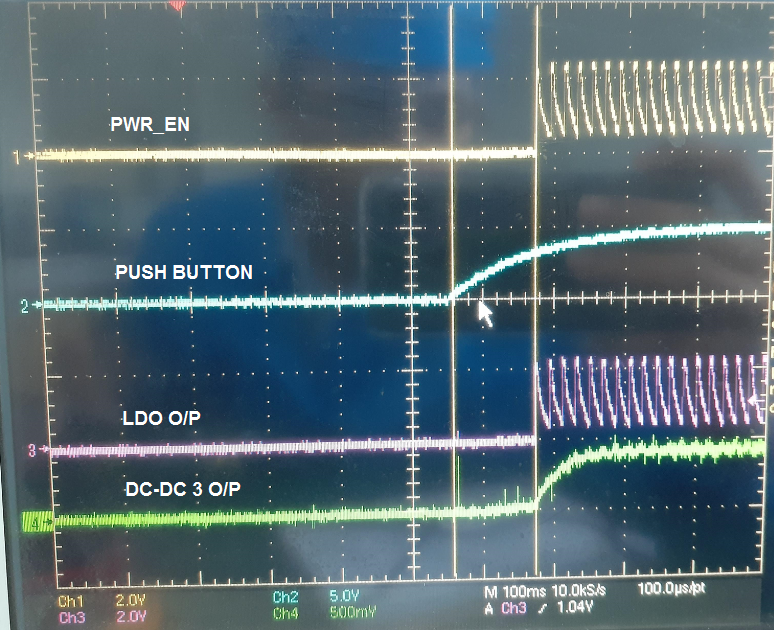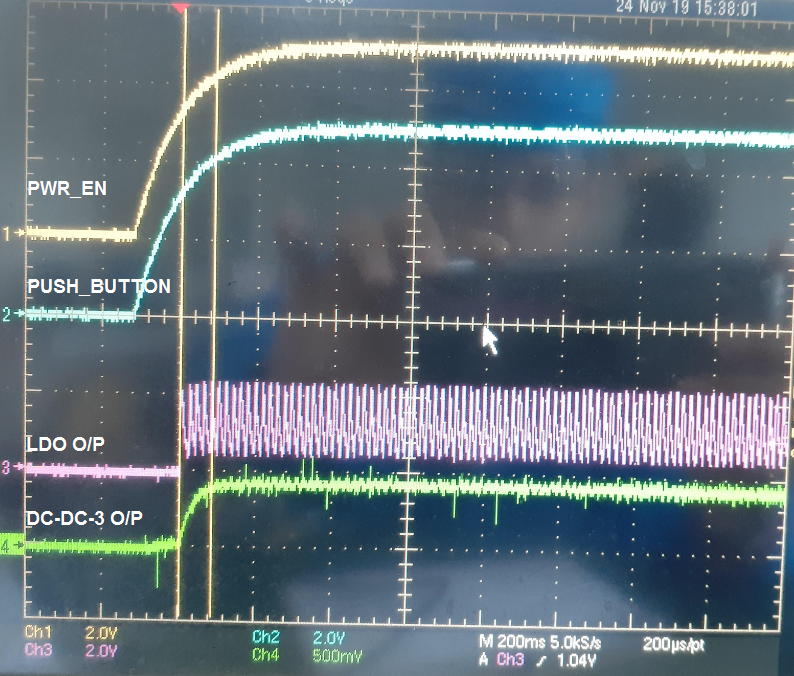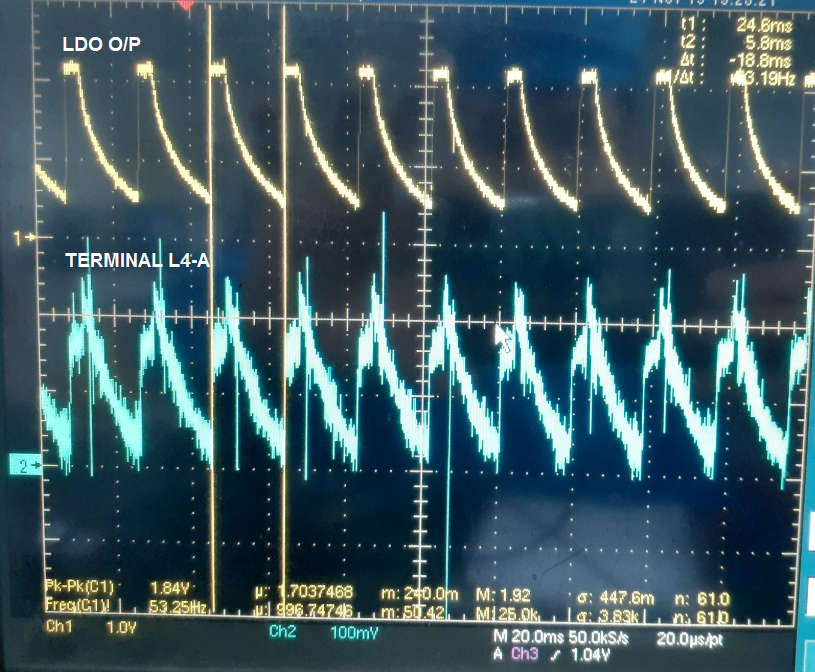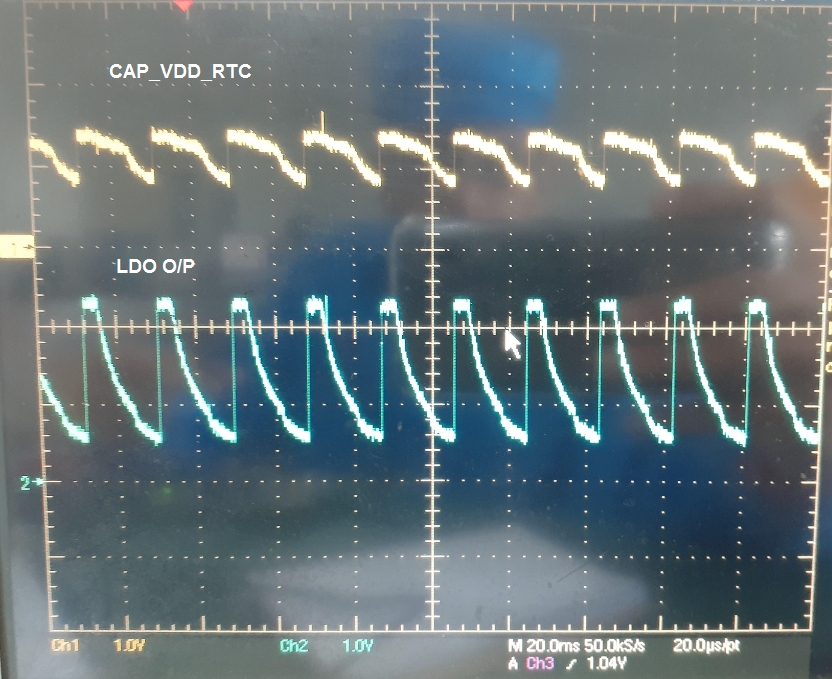Other Parts Discussed in Thread: AM4372,
I'm using TPS65218D0 to power AM4372 processor. During testing, it was observed that output from DC-DC converters 1, 2, 3 & 4 were only 500mV.
Design and component values are similar to the application note. Output values are 1.1V, 1.1V, 1.35V, 3.3V for DC-DC converter 1, 2, 3 & 4 respectively.
AC_DET is connected to 5V, PFI is set at 4.5V, PWR_EN is pulled up to 1.8V supply and also connected to RTC section of processor, Push button input is pulled up to 5V and
momentarily connected to GND using a push button.
It was observed that LDO output was at 2.2V for ~4mS and then starts decaying. LDO output is shown in CH.1 and PFI input is shown in CH. 2.
(As mentioned earlier, I am using the default values - so I was expecting 1.8V with 2% tolerance.)
LDO output and DC-DC converter 3 output:
Output load on the DC-DC converters were removed and the same above mentioned behavior was observed. But, LDO was connected to AM4372 RTC section, as we didn't have 0ohm in the LDO line.
nWAKEUp and PFO signals were trying to come-up but since LDO was going LOW, since they were pulled to 1.8V supply.
The above mentioned observation was repeatable and was observed in 3 boards.
Please can anyone share if they have observed similar issue and the required fix.
Your help will be much appreciated !
Thanks,
Aravind






